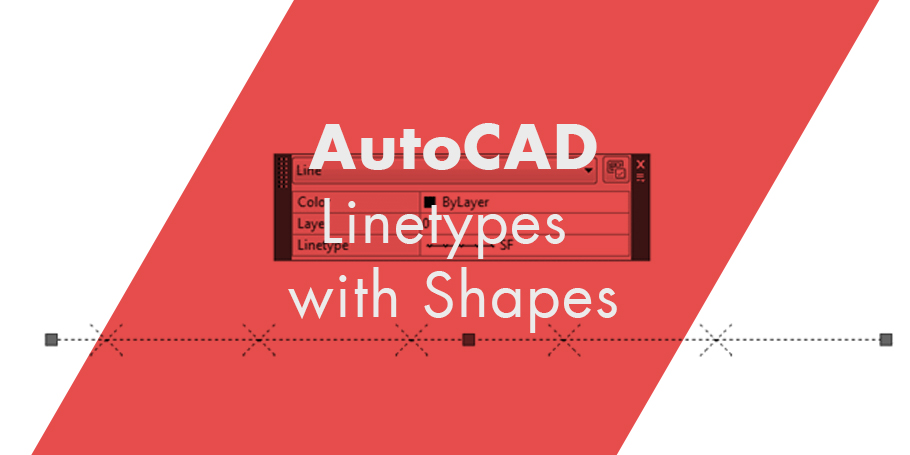
Introduction:
In the realm of Computer-Aided Design (CAD), AutoCAD stands as an industry leader, offering a multitude of tools for designers and drafters to bring their visions to life. One such powerful feature is the ability to create custom linetypes, allowing users to add a unique touch to their drawings. This extensive guide aims to unravel the intricacies of creating custom linetypes within AutoCAD, exploring the process, applications, and the boundless creative opportunities it presents to CAD professionals.
Section 1: The Significance of Custom Linetypes in AutoCAD
1.1 Understanding Linetypes: Linetypes in AutoCAD are essential components that define the appearance of lines, including dashes, dots, and spaces. While the software comes with a variety of predefined linetypes, the ability to create custom linetypes introduces a new level of flexibility and personalization to the drafting process.
1.2 Advantages of Custom Linetypes: Explore the advantages that custom linetypes offer in AutoCAD. From enhancing drawing aesthetics to improving communication through specialized linetypes, understand how this feature empowers users to tailor their designs according to specific project requirements.
Section 2: Anatomy of a Lintype in AutoCAD
2.1 Components of a Lintype: Delve into the components that make up a linetype in AutoCAD. Understand the role of dash elements, space elements, and symbols within the linetype definition, as well as their impact on the visual representation of lines in drawings.
2.2 Lintype Definitions: Gain insights into linetype definitions and how they are stored in AutoCAD. Explore the ASCII text files that define linetypes, providing users with the flexibility to create, modify, and share custom linetypes.
Section 3: Creating Custom Linetypes in AutoCAD
3.1 LINETYPE Command: Learn how to access the LINETYPE command in AutoCAD, the gateway to creating custom linetypes. Understand the options available within the LINETYPE command and how they influence the linetype creation process.
3.2 Defining Linetypes: Navigate through the linetype creation dialog box to define custom linetypes. Explore the use of dashes, dots, spaces, and text characters to craft linetypes that suit the specific visual language of your designs.
Section 4: The Shape Manager in AutoCAD
4.1 Introduction to the Shape Manager: Explore the Shape Manager in AutoCAD, a tool that allows users to add custom shapes to linetypes. Understand how the Shape Manager expands the creative possibilities by incorporating unique symbols and patterns.
4.2 Importing Custom Shapes: Learn how to import custom shapes into the Shape Manager and use them in linetypes. From logos to intricate symbols, discover how custom shapes contribute to the individuality of linetypes.
Section 5: Testing and Editing Custom Linetypes
5.1 LINETYPE SCALE: Understand the concept of linetype scale and how it affects the appearance of custom linetypes in different drawing scales. Explore strategies for optimizing linetype scale for consistent and clear representation.
5.2 Editing Linetypes: Learn how to edit and refine custom linetypes in AutoCAD. Explore options for modifying dashes, adjusting spacing, and refining the overall appearance to meet specific design preferences.
Section 6: Applying Custom Linetypes in Drawings
6.1 Applying Linetypes to Objects: Explore the process of applying custom linetypes to various objects within AutoCAD drawings. From lines and arcs to polylines, understand how to seamlessly integrate custom linetypes into your designs.
6.2 Layer and Linetype Assignments: Understand how layers and linetypes are interconnected in AutoCAD. Learn techniques for assigning custom linetypes to specific layers, streamlining the drawing process and ensuring consistency across different elements.
Section 7: Sharing Custom Linetypes
7.1 Exporting and Importing Linetypes: Explore the process of exporting and importing custom linetypes in AutoCAD. Learn how to share your custom linetypes with colleagues or transfer them between different projects, fostering collaboration and standardization.
7.2 Linetype Libraries: Understand the concept of linetype libraries in AutoCAD and how they facilitate the organization and management of custom linetypes. Explore strategies for creating and utilizing linetype libraries for increased efficiency.
Section 8: Advanced Techniques and Tips
8.1 Multi-Component Linetypes: Delve into advanced techniques by creating multi-component linetypes. Explore the use of different components, such as text or shapes, within a single linetype definition for intricate and customized designs.
8.2 Animated Linetypes: Unleash creativity by experimenting with animated linetypes. Learn how to create dynamic linetypes that convey motion or change over time, adding a unique visual element to your AutoCAD drawings.
Section 9: Troubleshooting and Common Issues
9.1 Linetype Scale Issues: Address common challenges related to linetype scale. Learn how to troubleshoot and resolve issues that may arise when custom linetypes appear distorted or irregular in different drawing scales.
9.2 Compatibility and File Paths: Explore solutions for compatibility issues and file path errors when sharing custom linetypes between different AutoCAD installations or collaborating with team members.
Conclusion:
As we conclude this exhaustive exploration of creating custom linetypes within AutoCAD, it is clear that this feature is a cornerstone of design customization and creativity. Whether you are a novice seeking to personalize your drawings or a seasoned professional aiming to establish a unique visual language, mastering custom linetypes unlocks a realm of possibilities. Embrace the flexibility, creativity, and precision that custom linetypes bring to your AutoCAD workflow, and witness how this fundamental feature transforms your designs into personalized, visually compelling masterpieces. With continuous practice, exploration, and innovation, you will navigate the intricate landscape of CAD design with confidence, producing drawings that stand as testaments to the power of customization within AutoCAD.